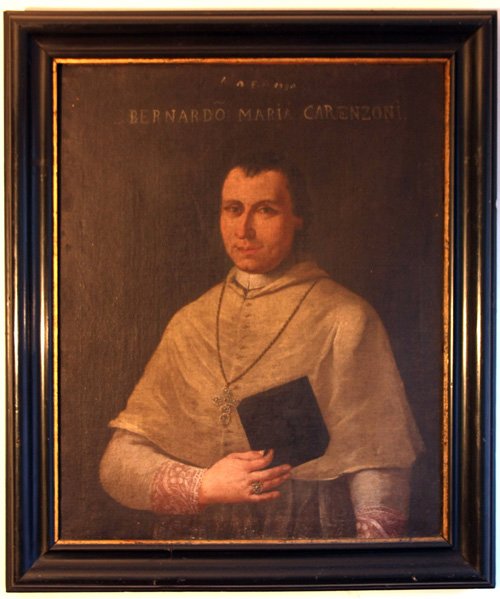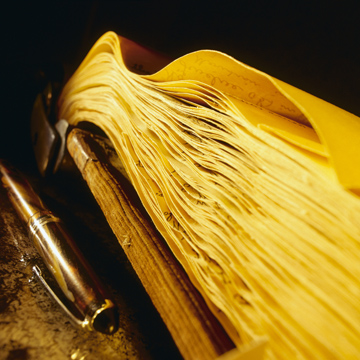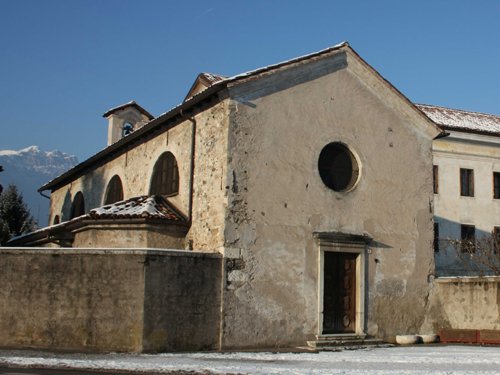The Carenzoni Monego Institute (IPAB) was originally an orphanage to which was later annexed the Bertagno professional school for women.
The Carenzoni orphanage owes its origin to Mons. Bernardo Maria Carenzoni, bishop of Feltre, who left in his will in 1810 a bequest to establish a home for girls, orphans of father and mother, and poor “who would probably end up begging in the street, exposing themselves to the peril of losing their innocence...” . The will did set the terms and rules of the home, and entrusted its running to the Charitable Congregation of the city.
The Congregation used the yield to purchase the building of the suppressed convent of the Ursulines and welcomed eight orphans. It opened officially in 1818 and was named after Carenzoni. It became a charitable foundation on 1st January 1818. After the First World War the school was restored with donations from private citizens and with assistance from the State, and prepared to accommodate sixty orphan girls.
In 1920 the engineer Giovanni Battista Monego gave a legacy to the Institute which was used to revive it economically and to meet its operating costs, and founded the men's section, which began operation in 1929.
In 1914 was established, within the Institute, the Professional School for Women "Bertagna", for teaching the art of cutting-sewing-embroidery, and in 1952 it was transferred to a new building, adjacent to the Institute, built with the donation of the senator Achille Gaggia. The school, named after Mrs "Maria Paoletti Gaggia", ceased its activities in 1970.
The Insitute ceased it function of orphanage in 1970 and currently houses boarding rooms for male and female high school and university students, and it is used as a holiday home during the summer.
history
The history of the institute

The historical archives

The Archives keep the papers of Feltre’s Institute of Public Service and Charity that since 1818 was dedicated to assisting young girls.
The papers filed at the Archives include the records of the Orphanage, the attached vocational school "Bertagna," and the colonies of the former farm, as well as those relating to the benefactors and bequests to the institution. The earliest documentation dates back to 1821.
The following donors contributed to considerably raise the assets of the Institute Carenzoni Monego (listed in chronological order): Bishop Bernardo Maria Carenzoni, founder of the women's section, Caldrari Marianna Boso, Berrettini nob. Domenico, Tonin Loschi Antonio , Marsiai Francesco, Villabruna Mons. Can. Nob. Bortolomeo, Olnaider Don Giuseppe, Berton Marianna Olnaider, Plancher Ersilia, Plancher Gaetano, Turrin Luigi, Bossiner Francesca, Guarnieri Geremia, Basso Angelina, D’Ambros Luigi, Pawnshop of Feltre, Gaggia Bortolo Brothers, Eng Monego Giovanni Battista (son of Carlo), founder of the men's section, Zasio Marco, Dalla Piazza Vincenzo and Maria, Guarnieri cav. Giovanni, Rizzarda cav. Carlo, Guarnieri Antonietta Dal Covolo, De Toffol Volanti Rina, Zerman Gen. Dott. Enrico and family, Barbante Memi, Scarpellotto Chiara ved. Pontil, Senator Eng. Gaggia Achille, Pavetti Enrico, Turrin, Count Cumano.
The following donors contributed to considerably raise the assets of the Institute Carenzoni Monego (listed in chronological order): Bishop Bernardo Maria Carenzoni, founder of the women's section, Caldrari Marianna Boso, Berrettini nob. Domenico, Tonin Loschi Antonio , Marsiai Francesco, Villabruna Mons. Can. Nob. Bortolomeo, Olnaider Don Giuseppe, Berton Marianna Olnaider, Plancher Ersilia, Plancher Gaetano, Turrin Luigi, Bossiner Francesca, Guarnieri Geremia, Basso Angelina, D’Ambros Luigi, Pawnshop of Feltre, Gaggia Bortolo Brothers, Eng Monego Giovanni Battista (son of Carlo), founder of the men's section, Zasio Marco, Dalla Piazza Vincenzo and Maria, Guarnieri cav. Giovanni, Rizzarda cav. Carlo, Guarnieri Antonietta Dal Covolo, De Toffol Volanti Rina, Zerman Gen. Dott. Enrico and family, Barbante Memi, Scarpellotto Chiara ved. Pontil, Senator Eng. Gaggia Achille, Pavetti Enrico, Turrin, Count Cumano.
The convent of the Ursuline

Since the beginning of the seventeenth century, the city of Feltre already housed a good number of Ursuline nuns and their convent was located at the head of the district of Tezze. The nuns did not observe the enclosure until 1637, when Gerolamo Cafranca granted them a home in the same district of Tezze. The nuns followed the rule of the Ursulines in Brescia of St Angela Merici and their duty was to teach Christian doctrine to the young girls of the city. The divine services were held at the church of St. Ursula, built in the middle of the seventeenth century. The institute in 1818 became the seat of the female orphanage, today the boarding school for students.
the church of St. Ursula
